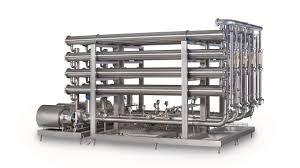Rising global awareness about water safety and stricter regulatory frameworks are driving the expansion of the ultrafiltration membranes market. These membranes, used for filtering suspended solids, bacteria, and viruses, are becoming a preferred solution for industries and municipalities striving to meet water quality standards. As policies evolve in response to pollution, climate stress, and public health concerns, ultrafiltration systems are gaining traction as reliable, efficient, and regulation-compliant technologies.
Regulatory Pressure Mounts in Municipal Water Systems
Governments across developed and emerging economies are tightening regulations related to water quality, especially for public drinking supplies. Agencies like the U.S. Environmental Protection Agency (EPA) and the European Environment Agency (EEA) are mandating more rigorous standards for microbial and chemical contaminants. These include revised limits for turbidity, total organic carbon, and pathogen removal.
Ultrafiltration membranes provide a physical barrier capable of exceeding conventional treatment thresholds. Their high efficiency in removing Cryptosporidium, Giardia, and other chlorine-resistant microorganisms makes them highly effective in municipal water applications. As a result, many water utilities are retrofitting or replacing sand filters and other traditional systems with membrane-based technologies to comply with these updated standards.
Industrial Sector Faces Regulatory Overhaul
In the industrial sector, regulations governing wastewater discharge are intensifying. Authorities are setting lower permissible limits for chemical oxygen demand (COD), total dissolved solids (TDS), and heavy metals. This is particularly evident in sectors like textiles, food and beverage, pharmaceuticals, and mining. Environmental protection boards in countries such as India, China, and Brazil are stepping up enforcement, with heavy fines and shutdowns for non-compliant operators.
Ultrafiltration membranes are now integral to industrial water management strategies, especially as pre-treatment stages before reverse osmosis (RO) or as part of zero-liquid discharge (ZLD) systems. By ensuring consistent water quality, they help industries meet effluent norms, reduce freshwater consumption, and mitigate environmental liabilities.
Impact of International Guidelines and Treaties
International treaties and guidelines are also influencing national policy, pushing countries toward uniform water quality targets. The United Nations’ Sustainable Development Goal 6—clean water and sanitation for all—has catalyzed regulatory reforms across continents. Likewise, the European Union’s Water Framework Directive and Industrial Emissions Directive are enforcing stricter pollution control, leading to broader adoption of membrane technologies.
Emerging economies receiving funding from global agencies like the World Bank and the Asian Development Bank must also comply with international environmental standards, which often require advanced water treatment infrastructure. Ultrafiltration systems are being widely adopted in such projects due to their reliability and low maintenance requirements.
Water Scarcity and Compliance Drive Technology Uptake
Water scarcity is closely linked to regulation, with many regions adopting water reuse mandates. In California, for example, utilities are now required to implement advanced treatment methods, including ultrafiltration, before releasing treated wastewater for reuse or groundwater recharge. Similar initiatives are underway in Singapore, Israel, and parts of Australia.
These mandates not only encourage water reuse but also drive demand for membrane-based filtration that ensures safety and quality compliance. Ultrafiltration's compact footprint and energy efficiency make it ideal for urban areas facing space constraints and growing demand.
Advancements in Regulatory-Compliant Technologies
Manufacturers are responding to this regulatory push by developing membranes with enhanced fouling resistance, higher flux rates, and longer operational life. Some are integrating digital monitoring systems to provide real-time compliance data, enabling users to meet regulatory audits and performance reporting requirements. Certification bodies like NSF International and the Water Quality Association (WQA) are increasingly approving new ultrafiltration models, which accelerates their market uptake.
Furthermore, the development of low-pressure ultrafiltration membranes helps reduce operational costs while still achieving high regulatory benchmarks. This has made ultrafiltration systems more accessible to small and mid-sized treatment facilities, further widening the adoption base.
Regional Highlights and Policy Shifts
In North America, the Safe Drinking Water Act and Clean Water Act have historically set the tone for water treatment technologies. Recent updates related to emerging contaminants like PFAS (per- and polyfluoroalkyl substances) are prompting utilities to explore advanced filtration options like ultrafiltration.
In Europe, the enforcement of the Urban Wastewater Treatment Directive and the recent EU Zero Pollution Action Plan are creating opportunities for membrane systems in both municipal and industrial segments.
Asia-Pacific, meanwhile, is undergoing regulatory modernization. Countries like China are moving from output-based to outcome-based regulation, emphasizing actual pollutant levels rather than just treatment capacity. This shift is encouraging investment in high-performance systems like ultrafiltration membranes.
Compliance-Driven Market Outlook
As regulations become more complex and performance-driven, ultrafiltration membranes are increasingly viewed as a long-term compliance solution. Their modular design allows scalability, which is especially attractive for utilities and industries facing phased regulation timelines. The ability to integrate with existing infrastructure also positions ultrafiltration as a low-disruption upgrade path for facilities needing to meet upcoming standards.
Furthermore, the cost of non-compliance—ranging from fines to reputational damage—is pushing even budget-conscious organizations to invest in proven technologies. This regulatory alignment will continue to be a defining force in the market's future trajectory.
Conclusion
The ultrafiltration membranes market is no longer driven solely by cost or efficiency—it is now a cornerstone of global water quality compliance. Tightening environmental regulations across municipal and industrial sectors are catalyzing widespread adoption of membrane technologies. With strong regulatory backing and continual innovation, ultrafiltration systems are set to play a central role in ensuring safe, sustainable, and compliant water treatment worldwide.



